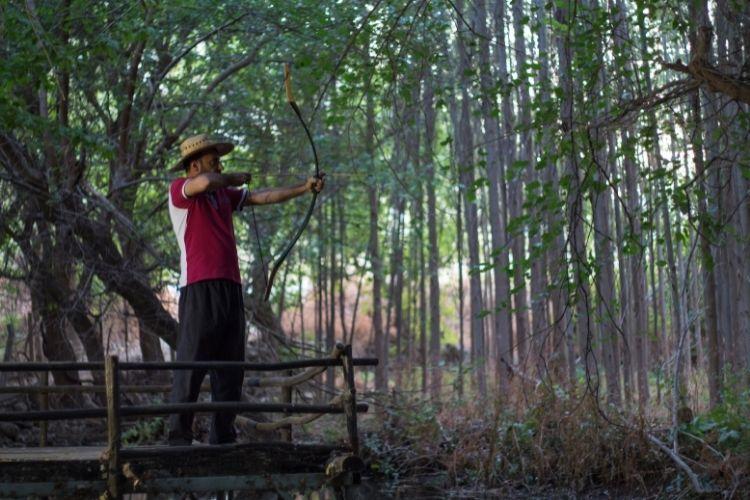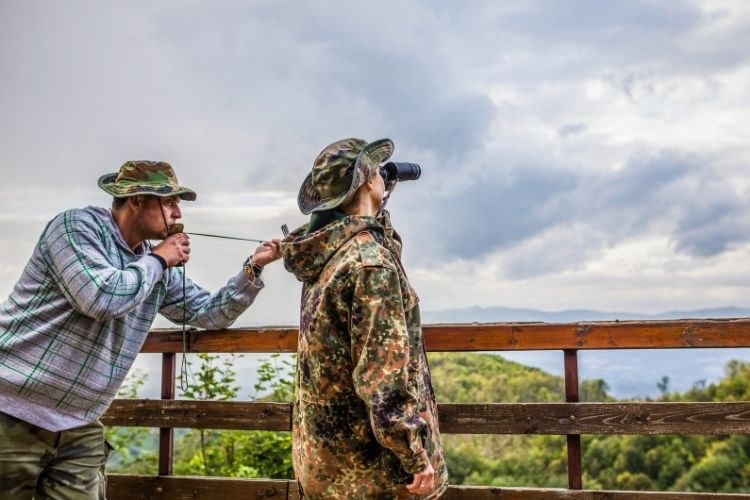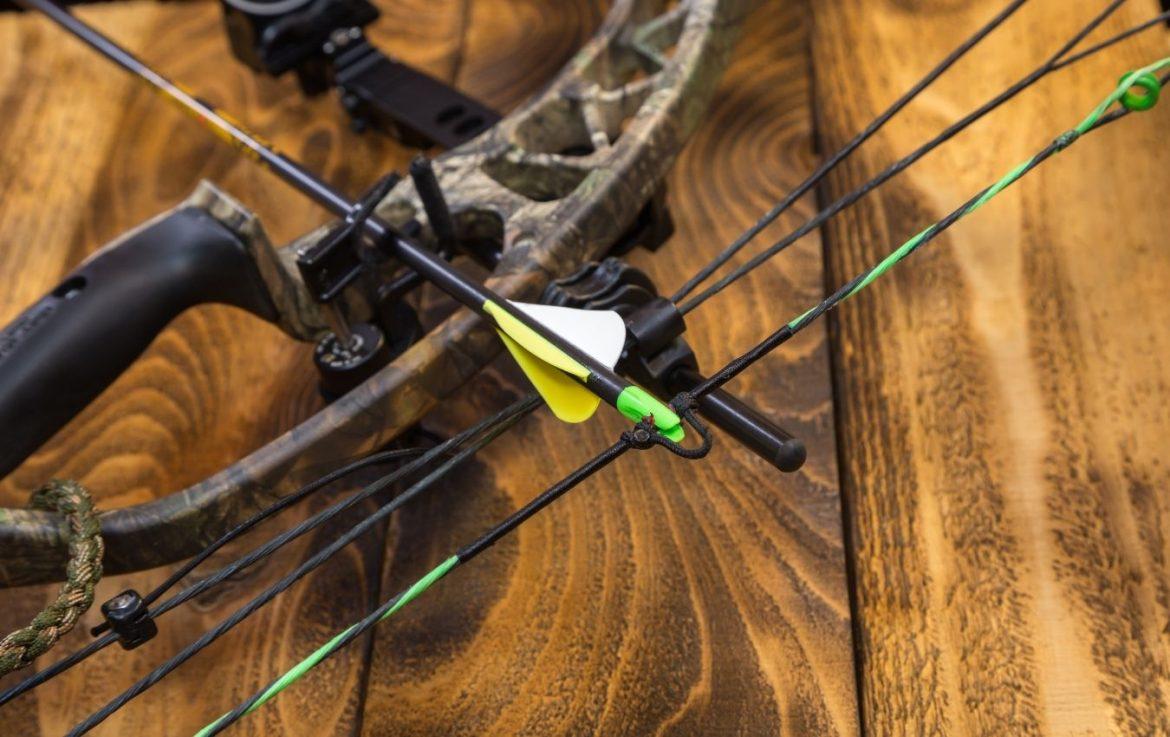Table of Contents
Bowhunting combines the ancient practice of archery with hunting, providing an immersive, rewarding outdoor activity. Whether you’re a seasoned archer or a newcomer, there’s something uniquely satisfying about honing your skills for a successful hunt. To ensure you start your bowhunting journey effectively, here’s an enhanced guide with 20 bowhunting tips for beginners, now infused with several key terms to enrich your knowledge base.

Understand Your Equipment
- Choose the Right Bow: Selecting a new bow that matches your physique and strength is essential. Beginners may prefer a compound bow due to its adjustable draw length, and the let-off at full draw. Your sight pin must be calibrated accurately, as this will help you across various yardages.
- Invest in Quality Arrows: A straight shaft ensures better penetration and flight stability, and when it comes to bow shots, every inch of accuracy counts. Invest in arrows that offer enough stiffness and weight for your intended game animals.
- Get a Reliable Release Aid: With a compound bow, a release aid can make a world of difference. It helps maintain a consistent release, improves accuracy, and reduces strain on your bow arm. Choose one that feels intuitive for a fluid shot execution.
- Use the Right Broadheads: For lethally efficient shots, broadheads must be tailored to the game you pursue. If you’re starting with deer hunting, broadheads that provide deep penetration and create a wide cut will result in a quicker, more humane kill.
Hone Your Skills
- Practice Regularly: Bow hunting skills are refined through repetition. Practice shots in various conditions, especially in low light, since many game animals are most active at dawn and dusk. Aim to hold a steady full draw for long periods, as this replicates real hunting situations where the perfect shot opportunity can take time.
- Understand Bow Mechanics: Familiarize yourself with archery equipment maintenance. A well-tuned bow will be quieter and more efficient, allowing for second shots if necessary. Learning how accessories like stabilizers and dampeners can improve your bow will enhance your performance.
- Perfect Your Shooting Form: A good form at full draw is key to taking consistent bow shots. Maintain an anchor point, focus on a smooth release, and practice until it becomes second nature, allowing for a perfect shot even in the moment of truth.
- Develop Range Estimation Skills: Judging the distance to your quarry is critical. Realistically, a rangefinder is an invaluable tool. Still, practice estimating yardage visually, as it’s a skill that will serve you well, especially for those quick moments where a rangefinder might not be practical.

Scout and Plan
- Scout the Area: Understanding the natural ground and finding good places that offer enough cover are pivotal strategies. Scouting helps in locating food sources, water holes, bedding areas, and travel paths used by wild game like whitetail bucks, especially during the rut.
- Understand Animal Behavior: For a deer hunter, knowing the difference between a scrape made by a buck and a bedding area frequented by does can be the difference between filling a tag and going home empty-handed. Recognize signs of elk wallows or deer rubs to predict animal movement.
- Plan Your Approach: Enter your hunting ground downwind to prevent alerting your game. Pay attention to the noise of your gear; a noisy quiver or binoculars can betray your presence just as much as scent.
- Choose Stand Locations Wisely: Select treestand positions with a clear view of the bedding to feeding areas, or set up near food plots with good visibility. Ensure you’re wearing a safety harness at all times when hunting from heights.
In the Field
- Manage Your Scent: Bowhunters must remain as odor-free as possible. Use scent-eliminating products and remain downwind of your quarry. Control human odor meticulously to get close enough for a lethal shot.
- Stay Stealthy: Camouflage allows bow hunters to blend with the natural ground, and careful, deliberate movements ensure you don’t spook your game. It’s about being patient, waiting for the deer to offer a vital shot, and not rushing the moment of truth.
- Be Patient: Often, success in bow hunting results from long periods of waiting. As a bowhunter, you learn to revel in the stillness, the anticipation of the perfect shot on a whitetail or maybe a doe during deer season.
- Prioritize Shot Placement: The first time you draw on a whitetail, it’s an adrenaline rush, but the priority should be a clean and lethal shot that allows for proper penetration of your broadheads, targeting the animal’s vitals.
Post-Shot Strategy
- Watch and Listen: Right after the shot, keen observation and listening can offer clues about the state of the animal. This information can assist in making a well-informed decision on when to start tracking, especially after a shot at dusk or in the low-light hours.
- Give It Time: If the shot placement wasn’t perfect or the deer jumps the string, give the animal time. It’s a novice mistake to follow too closely, too soon. You don’t want to risk losing the venison you worked so hard for.
- Learn to Track: Educate yourself on blood trail patterns for when tracking is necessary. Recognizing the differences between arterial and muscle blood can shape your tracking strategy, ensuring recovery of the game.
- Respect the Game: Above all, a bowhunter’s ethos centers around respect for the wild game they pursue. Recover your game swiftly, process it respectfully, and use as much of the animal as possible. It’s not just about the thrill of October’s chase; it’s about sustainable, ethical harvesting that honors the life of the animal you’ve taken.
Final Words
For every newbie out there eager to experience the thrill of bowhunting, these bowhunting tips are a solid foundation for your upcoming adventures. Take your time mastering your archery equipment, understanding the behavior of elk or whitetail, and curating your skills for a successful next hunt.
With patience and dedication, the journey from a fledgling bowhunter to a confident and ethical shooter is an excellent way to connect with the wild and fill your quiver with experiences just as much as arrows. Here’s to hoping each expedition leads to a healthy dose of venison and stories for your next campfire!

